The Mitsubishi Xpander has been around for a while, but in February, the MPV received a new hybrid electric vehicle (HEV) option in Thailand. This version made its first public debut at the 2024 Bangkok International Motor Show (BIMS) and we got a closer look at it – both in standard and Xpander Cross forms.
Obviously, the biggest change is under the bonnet, where you’ll find an electric motor that does the heavy lifting in powering the car. It produces 116 PS and 255 Nm of torque and is juiced by a lithium-ion battery and an Atkinson-cycle version of the 1.6 litre 4A92 MIVEC naturally-aspirated four-cylinder engine. The latter produces 95 PS at 5,100 rpm and 134 Nm at 4,500 rpm.
Mitsubishi’s new e:Motion hybrid system works in a similar fashion to Honda’s e:HEV system. Most of the time, the car is driven by the electric motor, with the engine only serving to generate electricity. At higher speeds, the engine can clutch in to power the car more efficiently, assisting the electric motor.
This, together with Mitsubishi’s first ever electric water pump, allows for a claimed 10% reduction in fuel consumption (on the NEDC cycle) compared to the petrol model, rising up to 34% in city driving.
In order to maximise the hybrid system’s effectiveness, the Xpander HEV features three drive modes, including a normal mode, a charge mode that presumably engages the engine more to keep the battery topped up, as well as a full-electric mode.
There are four additional drive modes for specific conditions – Wet, Gravel, Tarmac and Mud. The car also features Mitsubishi’s famed Active Yaw Control (AYC) torque vectoring, although unlike the trick differential of Lancer Evolutions of old, this one functions by braking the wheel with the least grip.
Based on the facelifted Xpander, the HEV model continues to feature that car’s updated looks, including new T-shaped lower headlights, a more intricate Dynamic Shield grille design and a beefier skid plate. At the rear, the T graphic is repeated in the redesigned taillights, while the rear bumper is all new with vertical reflectors and a wider skid plate. There’s also a new turbine design for the 17-inch two-tone alloy wheels.
The HEV can also be had as an Xpander Cross, replete with lots of black body cladding, chunky front and rear skid plates, roof rails and unique two-tone alloys. Both HEV models are differentiated through the HEV badges at the front and rear, a Hybrid EV badge on the front doors and blue accents on the leading edge of the front bumper and the wheels.
Inside, the HEV benefits from a new eight-inch digital instrument display, a three-spoke steering wheel from the new third-generation Triton, a stubby electronic gear selector and an electronic parking brake with auto brake hold.
This is paired with the improvements introduced with the facelift, including a new horizontal dashboard design, a freestanding nine-inch infotainment touchscreen with Apple CarPlay and Android Auto, and digital air-con controls (still single-zone). Both the Xpander and Xpander Cross come with two-tone interiors, with the accent colour being brown and blue respectively.
As before, the Xpander HEV is a seven-seater, equipped with synthetic leather upholstery with heat rejection technology, front and third-row 12-volt sockets and second-row USB-A and USB-C ports. The hybrid drive battery is located under the front seats, so passenger and luggage room should be identical to the standard Xpander.
Other bits of standard kit include keyless entry, push-button start, tilt and telescopic steering adjustment, auto lights and wipers, an auto-dimming rear-view mirror and six speakers. Unfortunately, you still only get two airbags and stability control, and the Xpander still cannot be had with driver assists such as autonomous emergency braking.
Prices for the Xpander HEV are 933,000 baht (RM121,100) for the standard model and 961,000 baht (RM124,700) for the Xpander Cross HEV. These represent increases of 21,000 baht (RM2,700) and 15,000 baht (RM1,900) respectively over the equivalent Xpander GT and Xpander Cross petrol models.
GALLERY: Mitsubishi Xpander HEV at BIMS 2024
GALLERY: Mitsubishi Xpander Cross HEV at BIMS 2024
Looking to sell your car? Sell it with Carro.

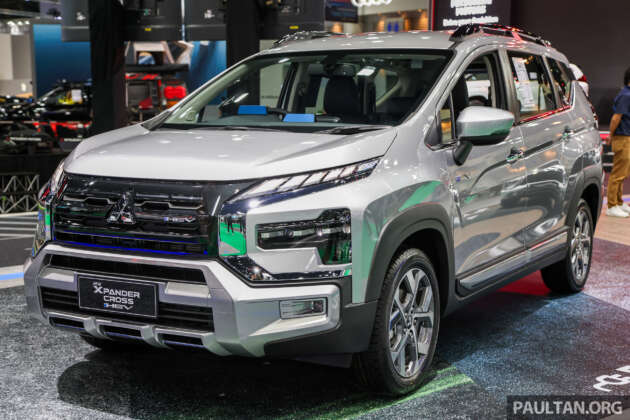
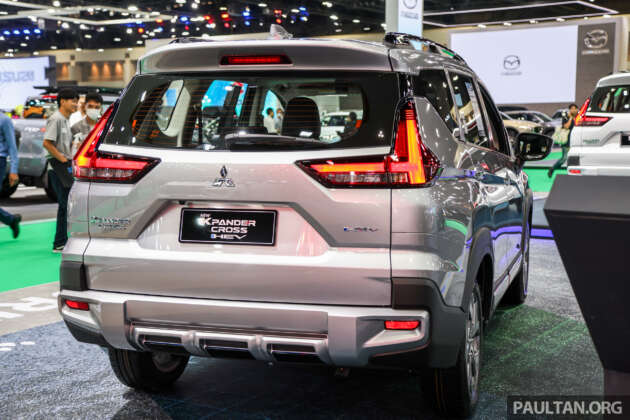


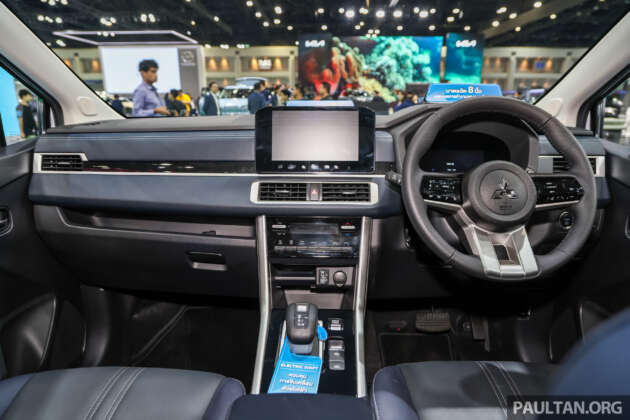




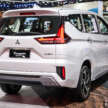
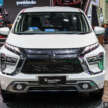
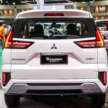
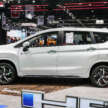
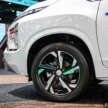



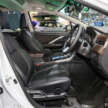
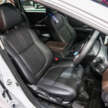







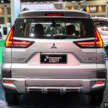
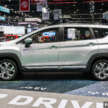
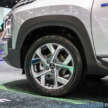







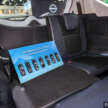
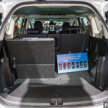












2 airbags? Haaa